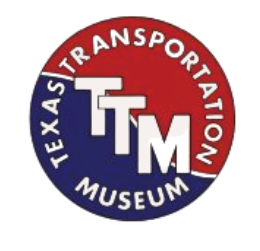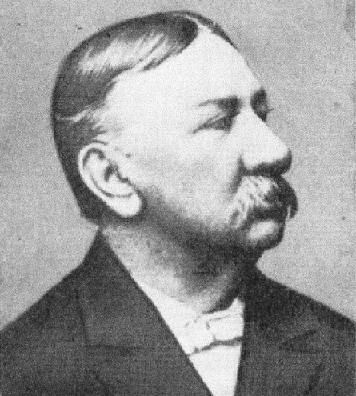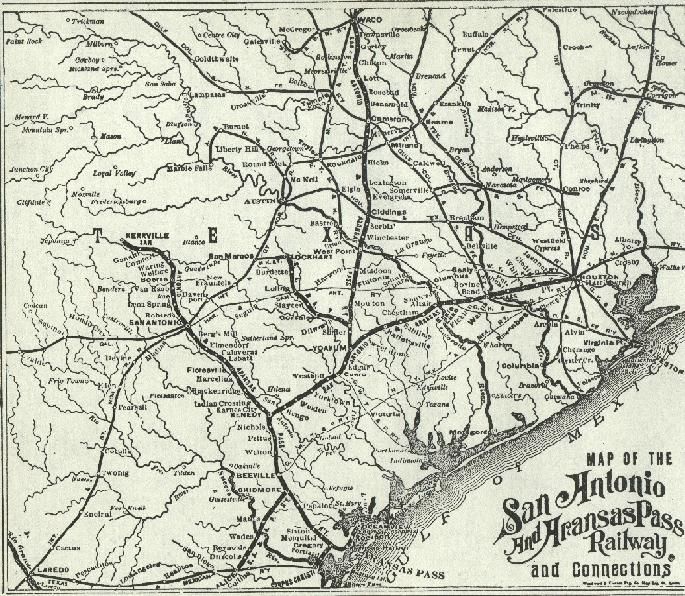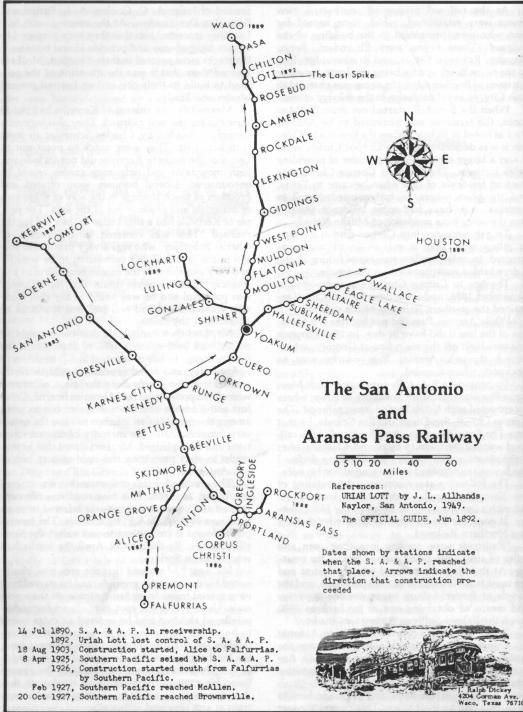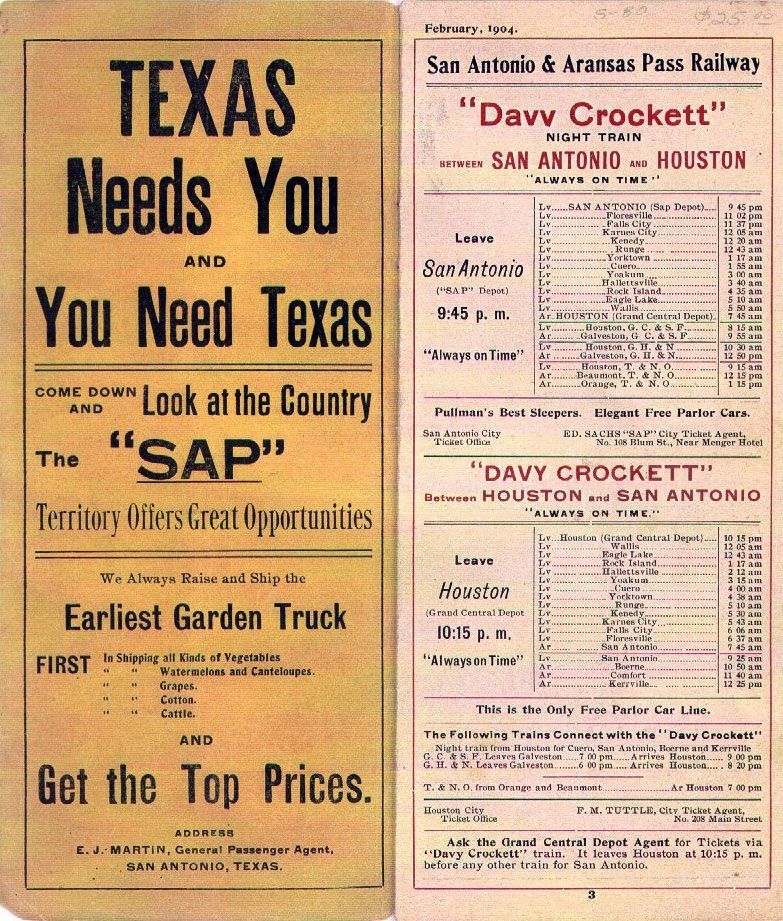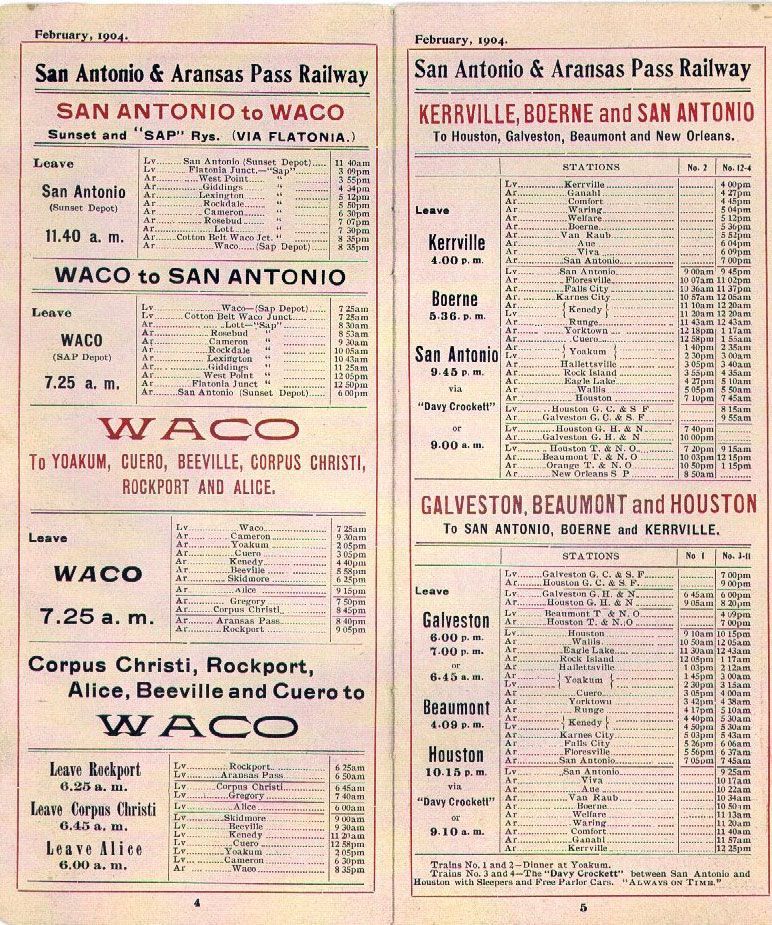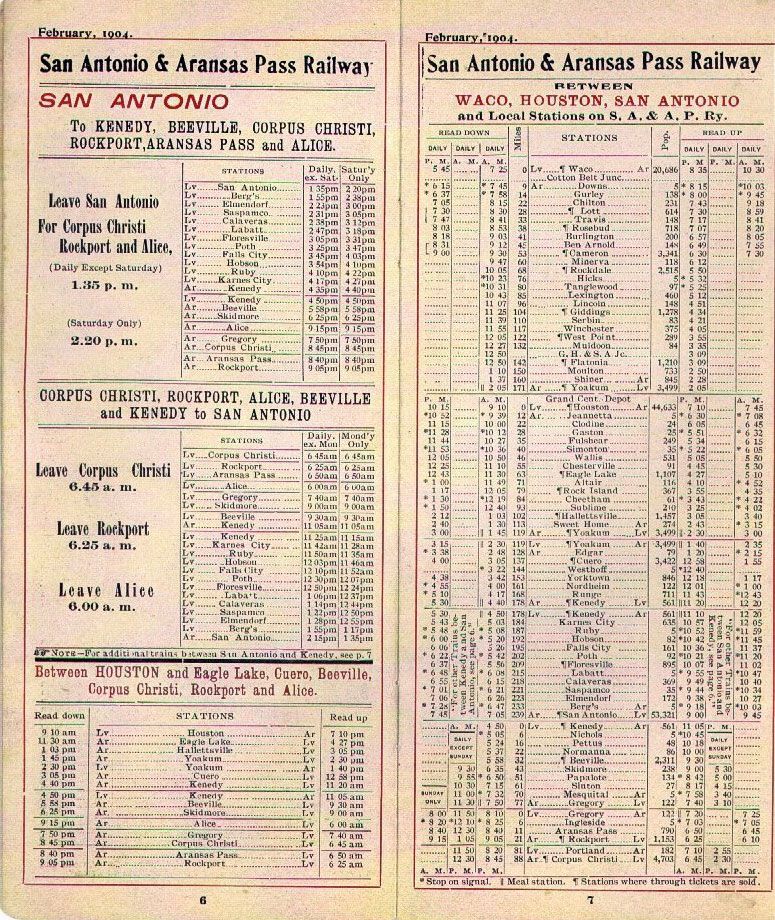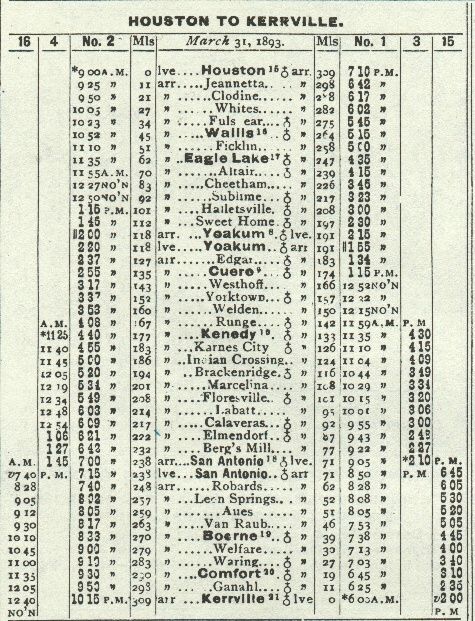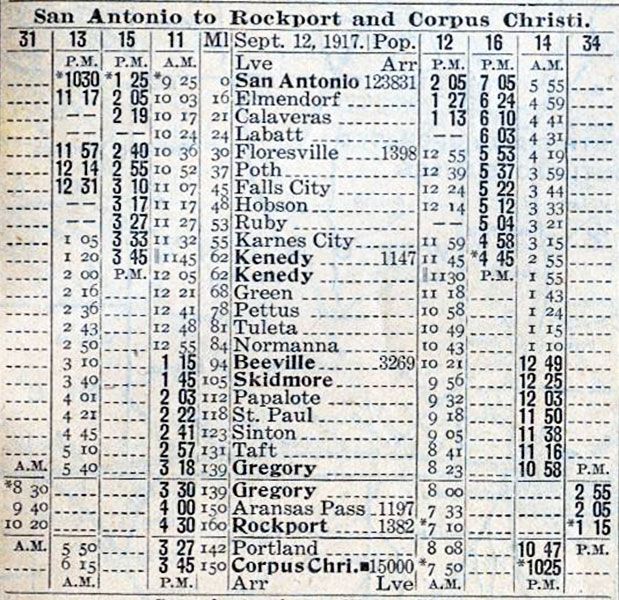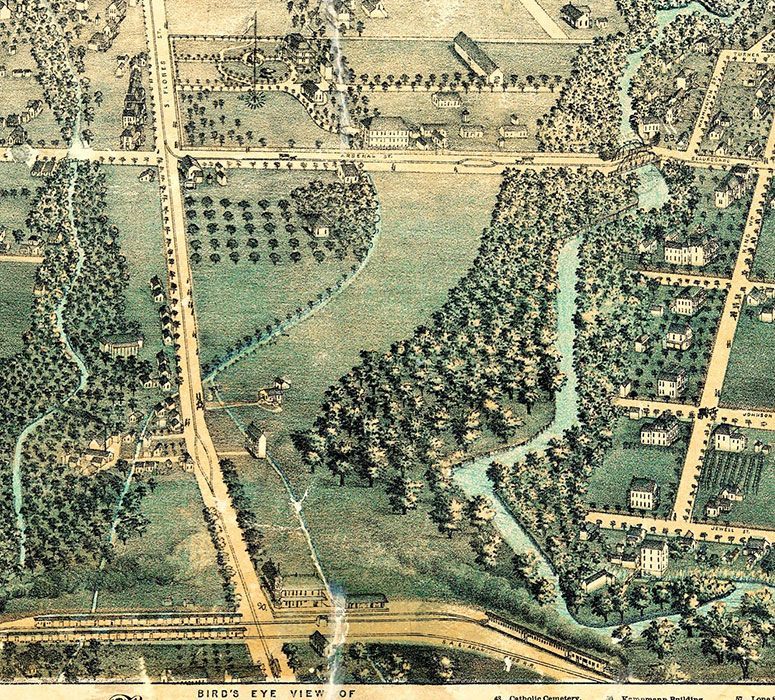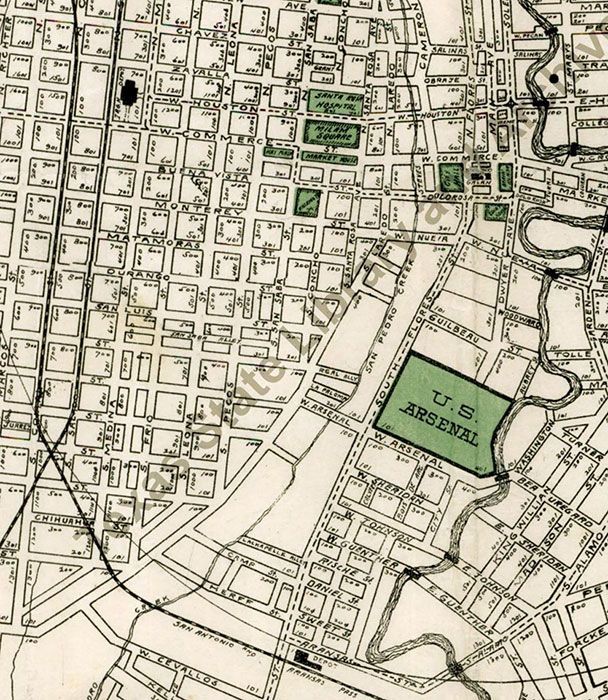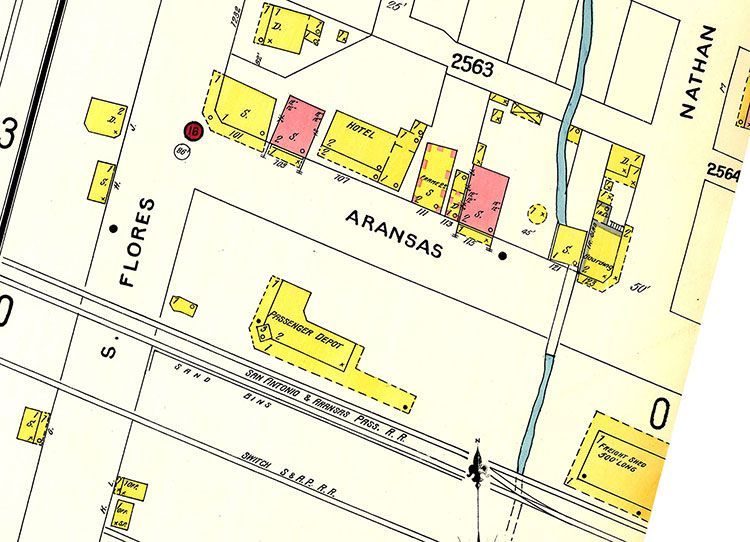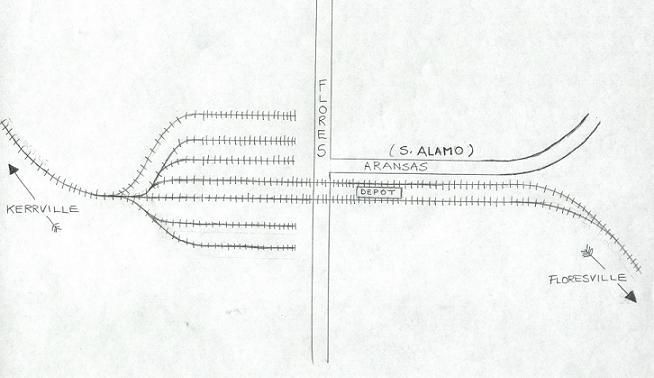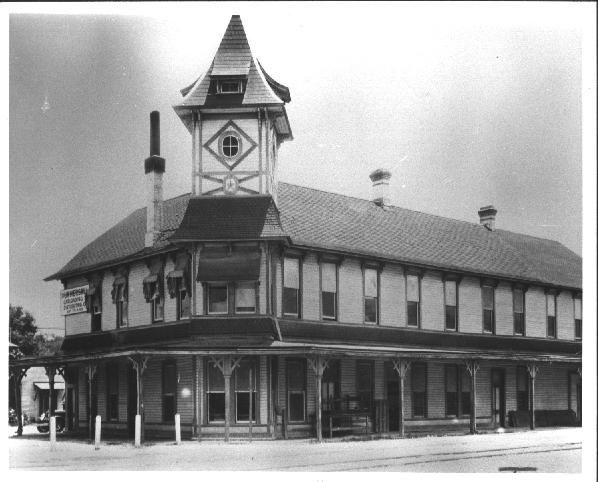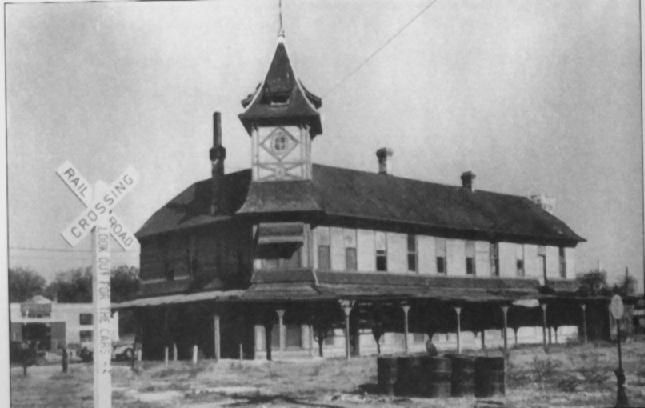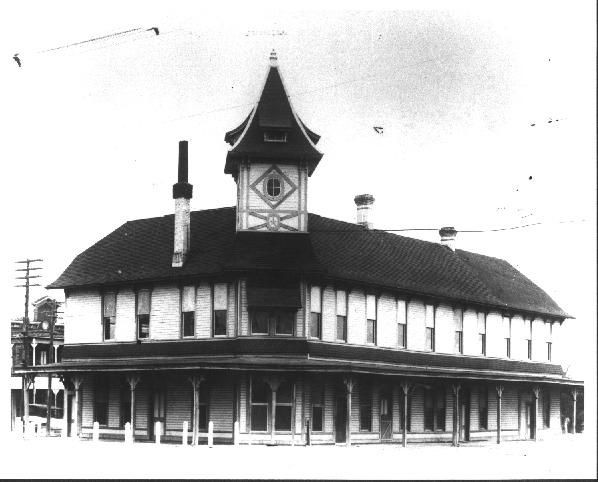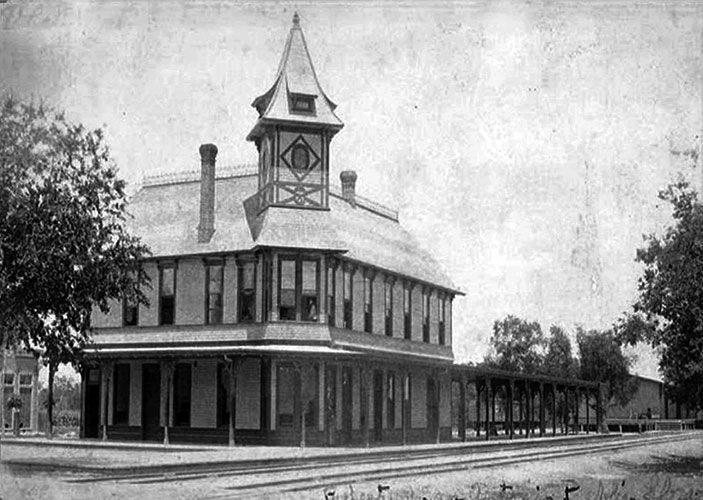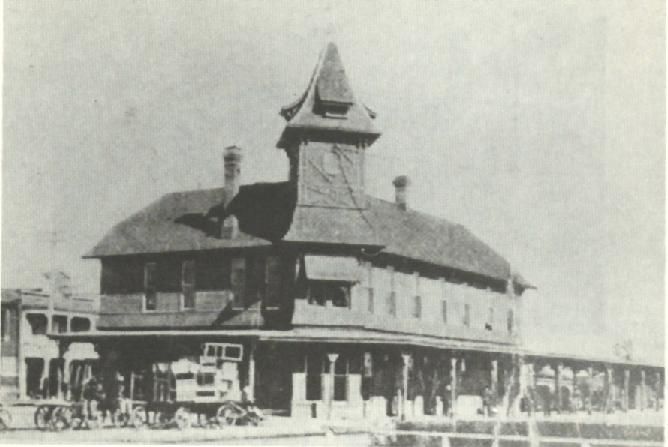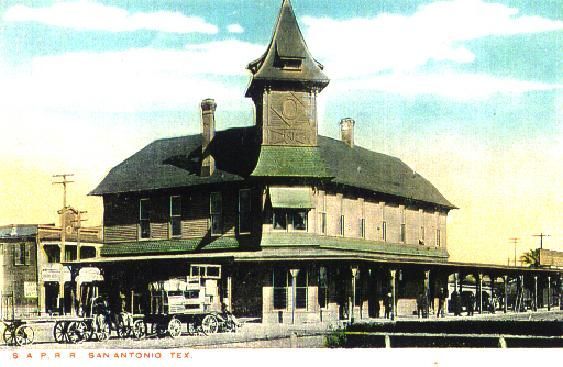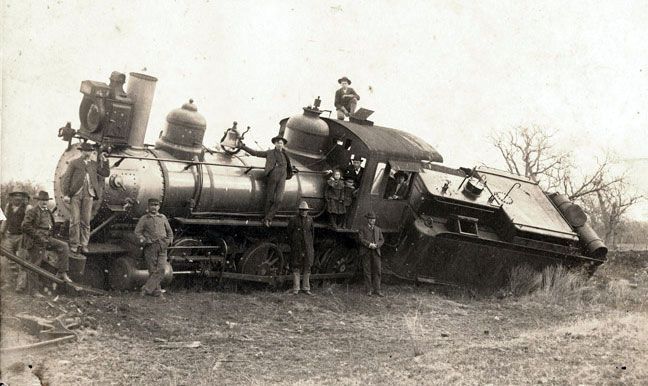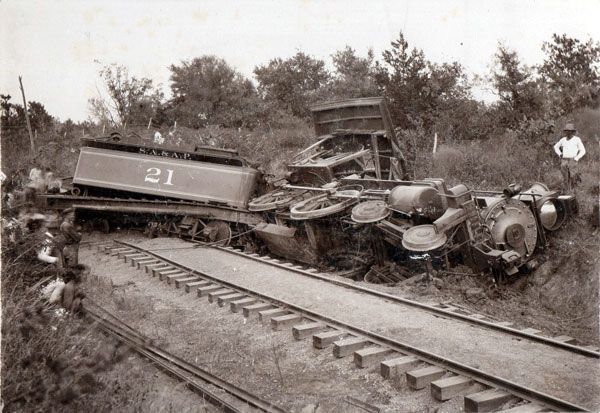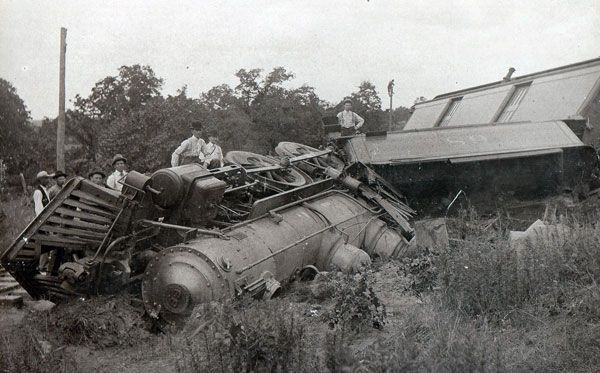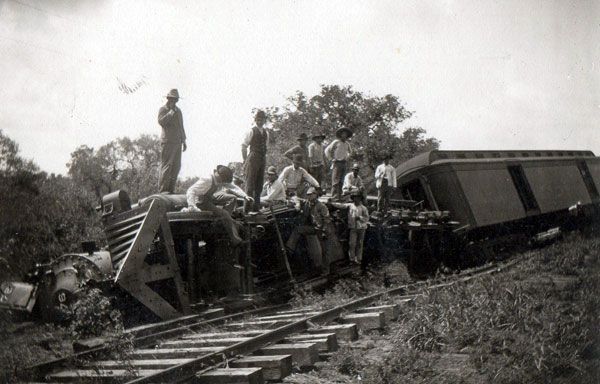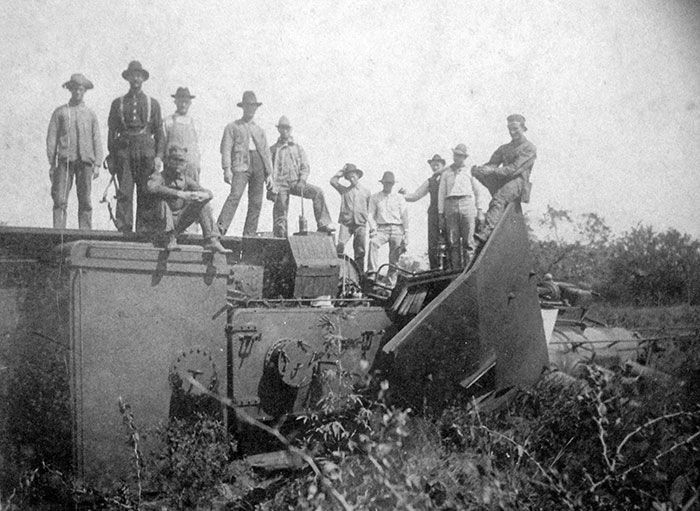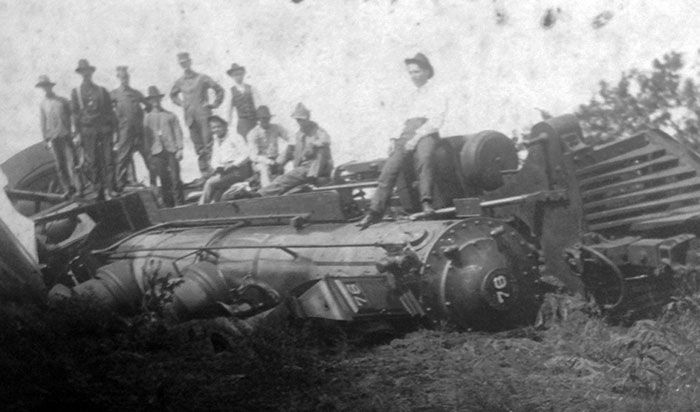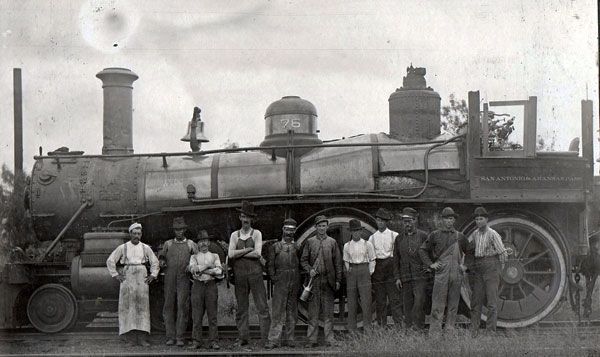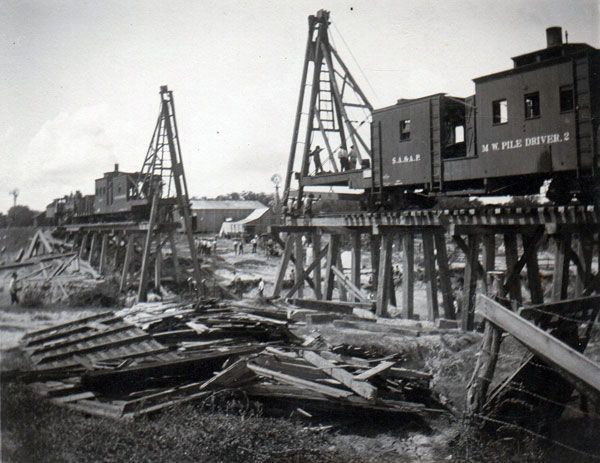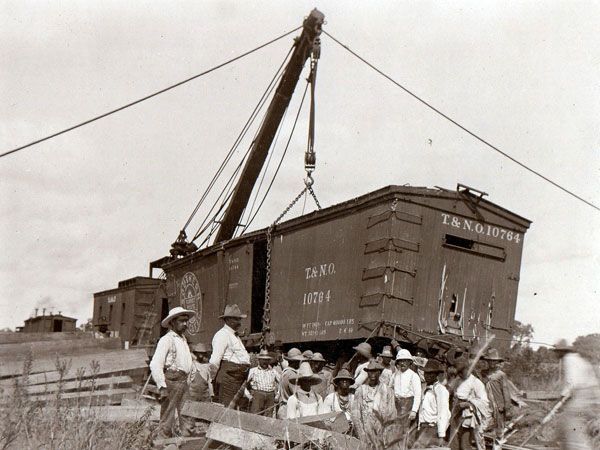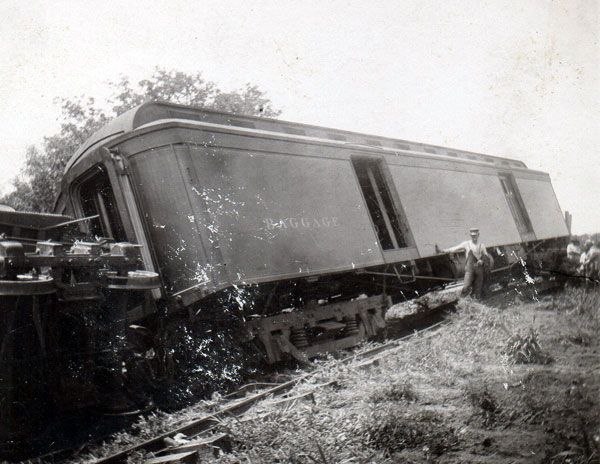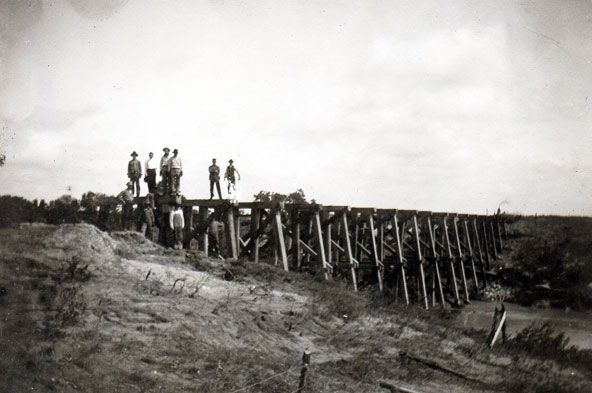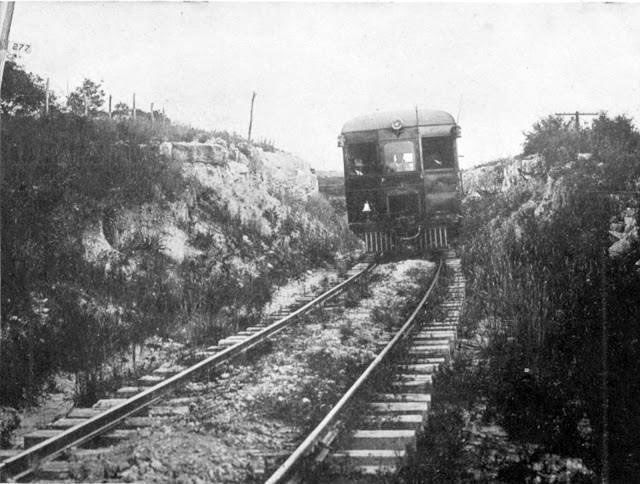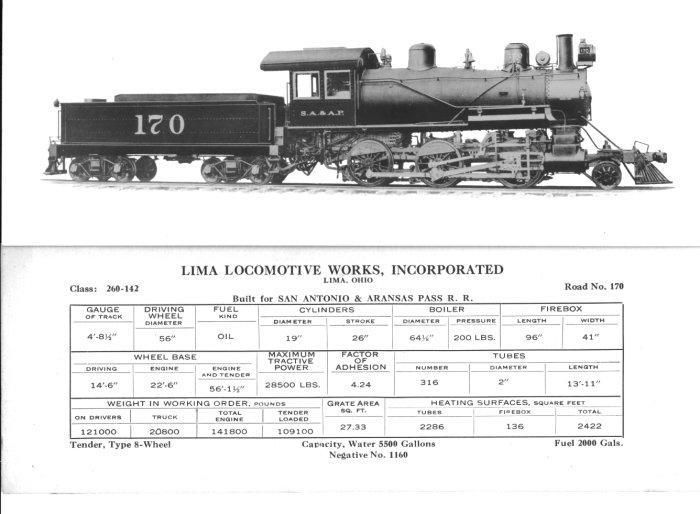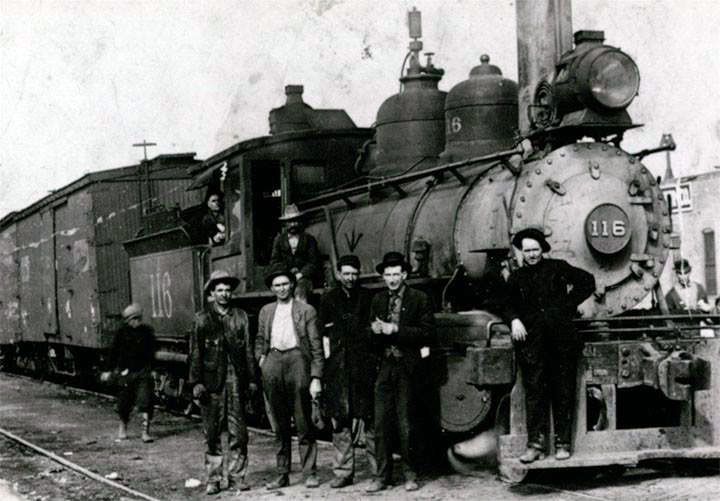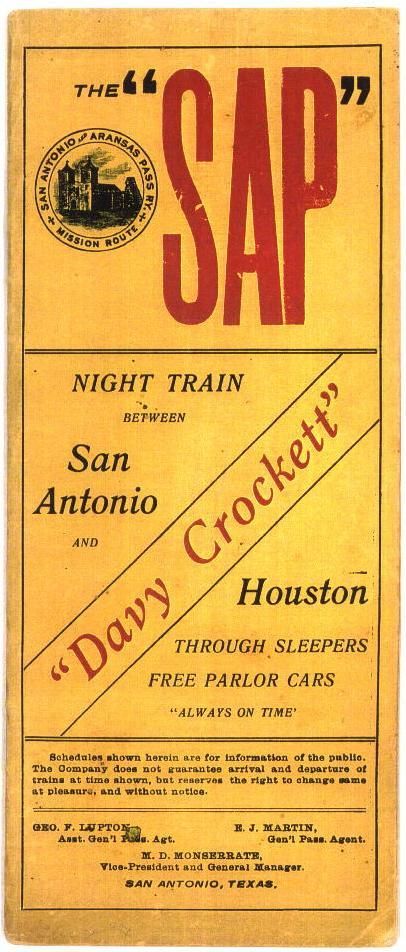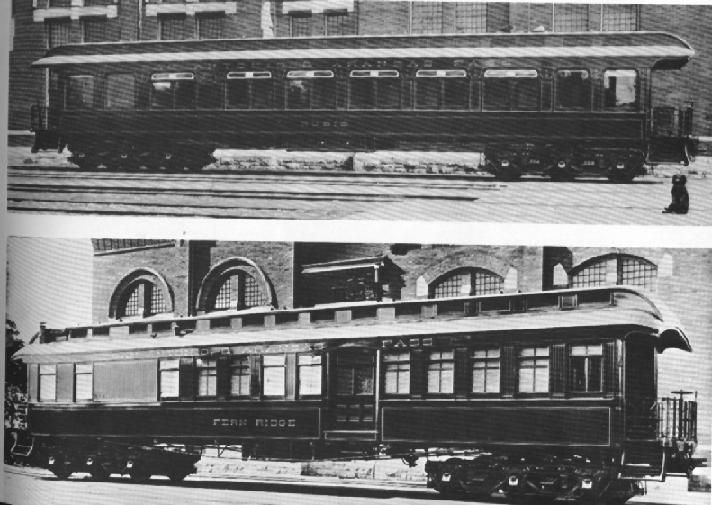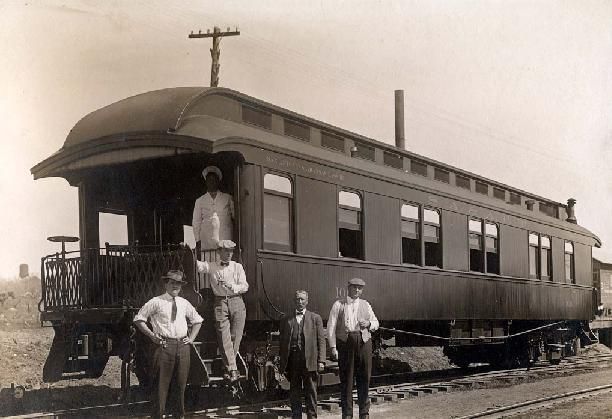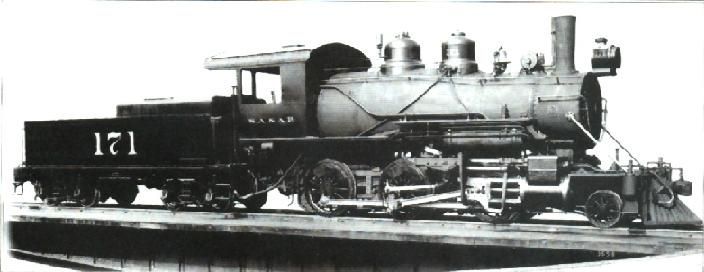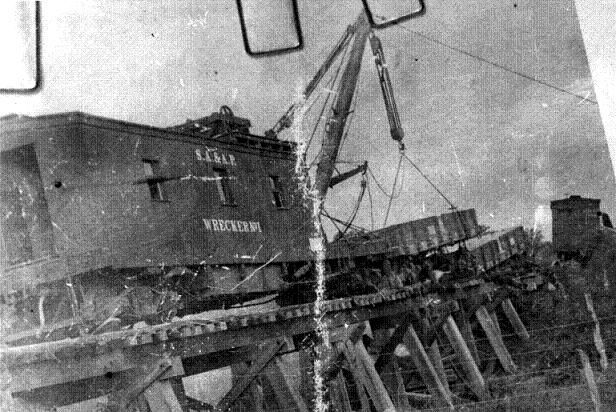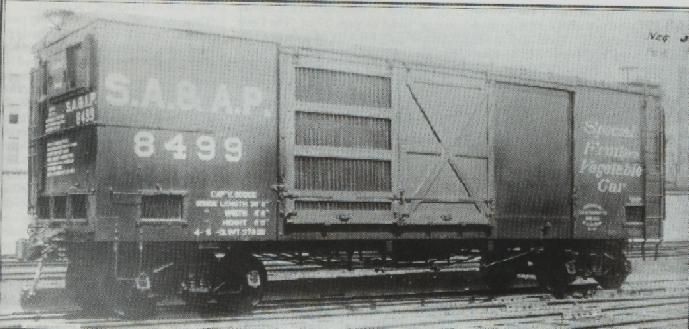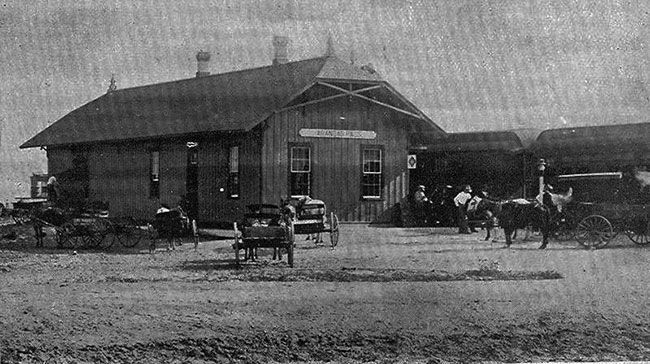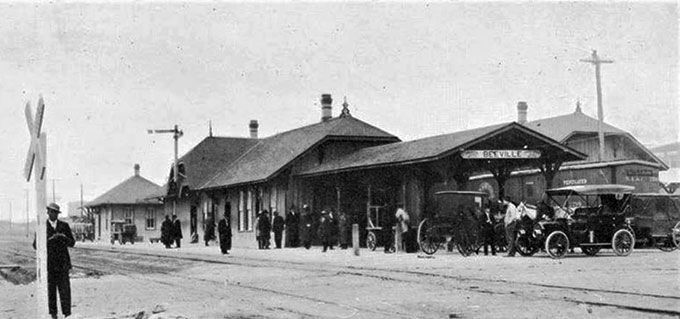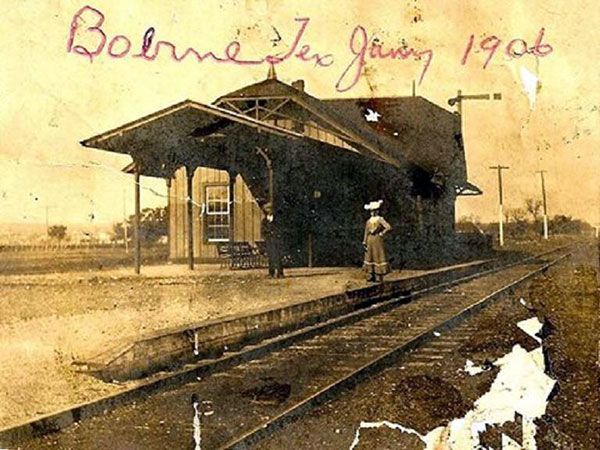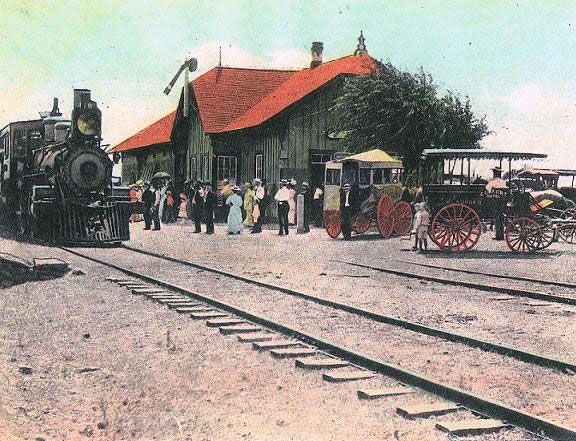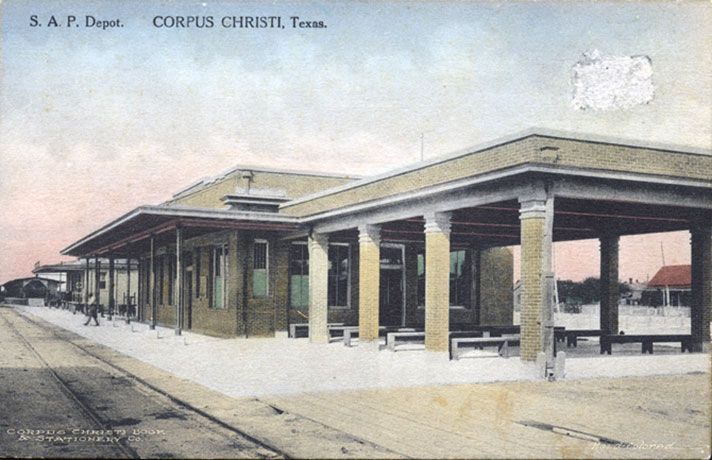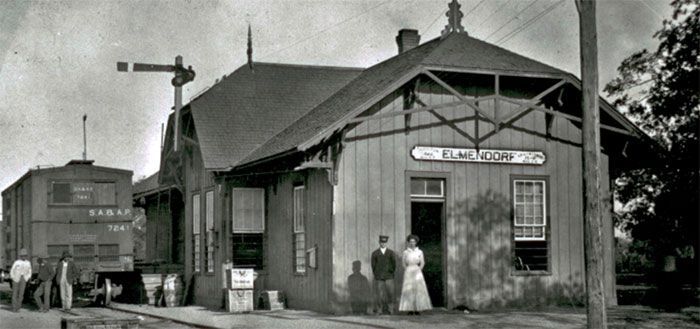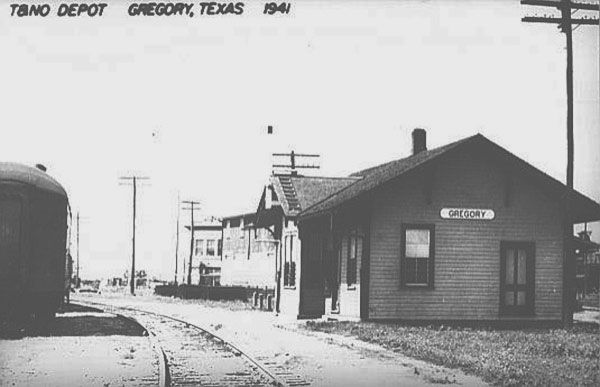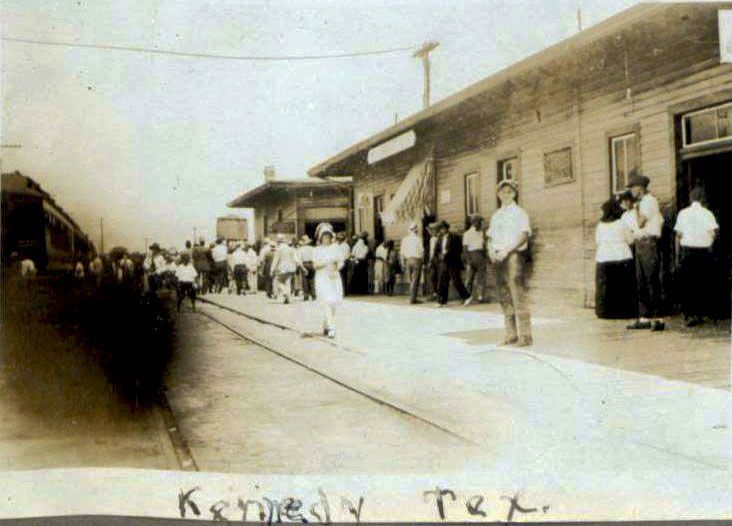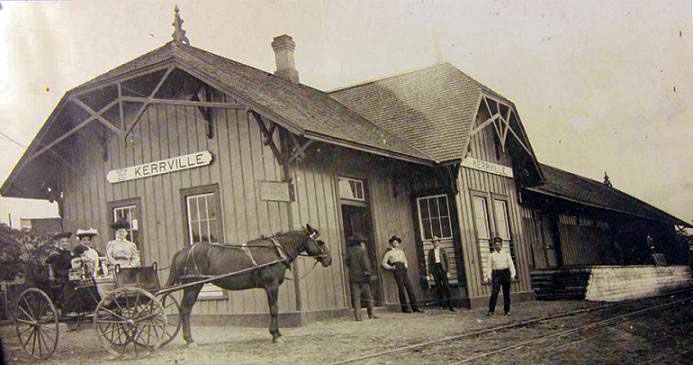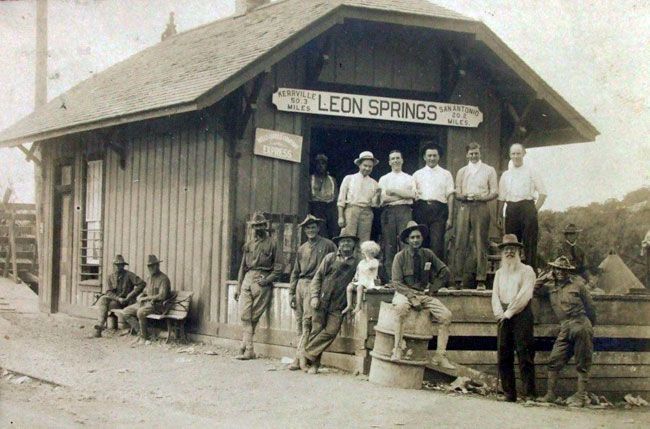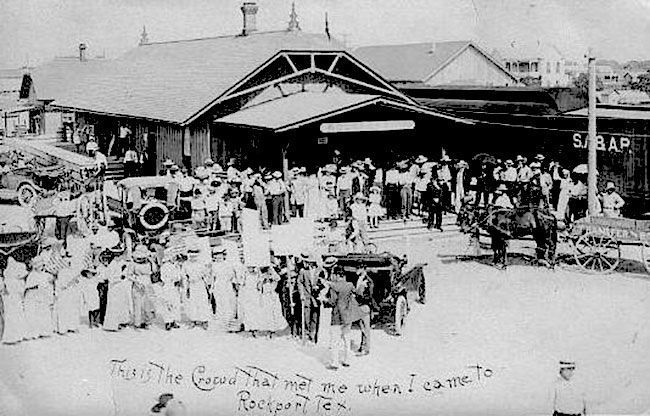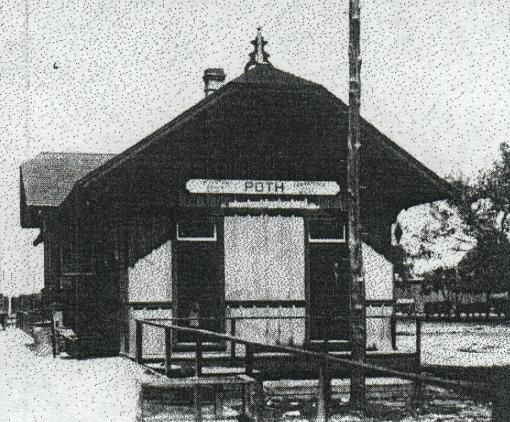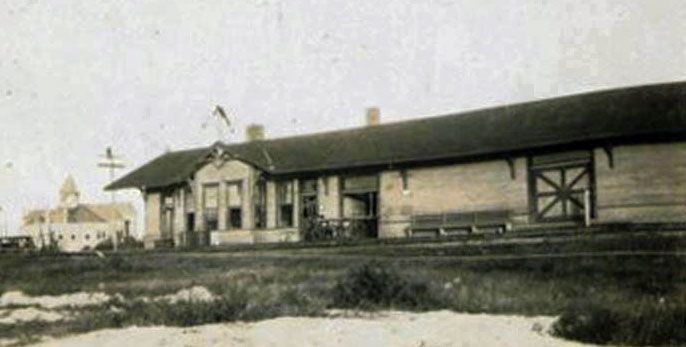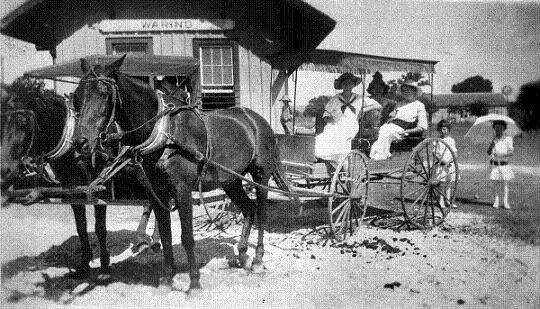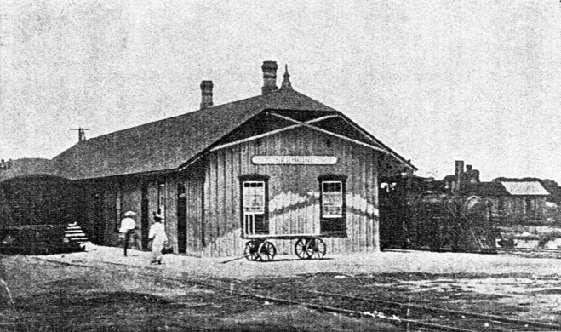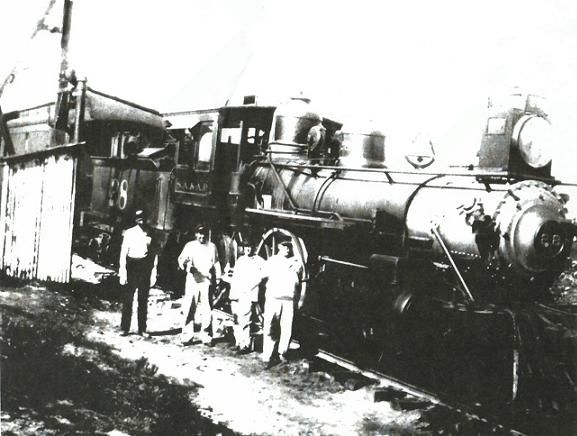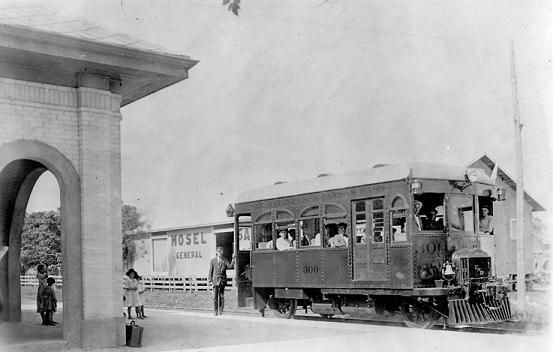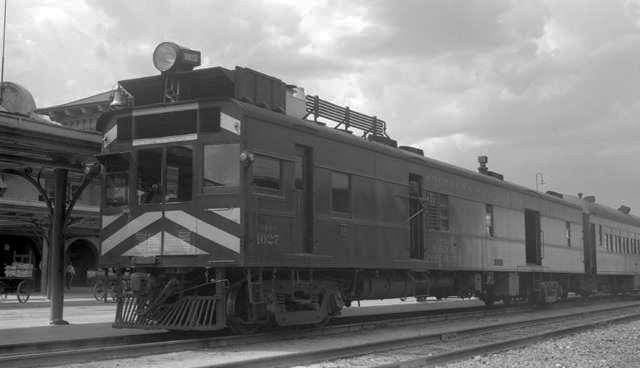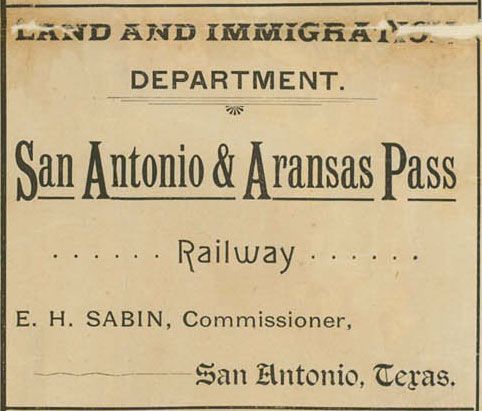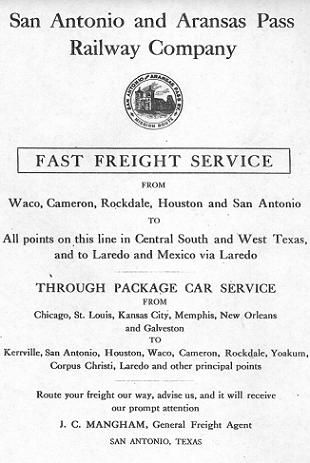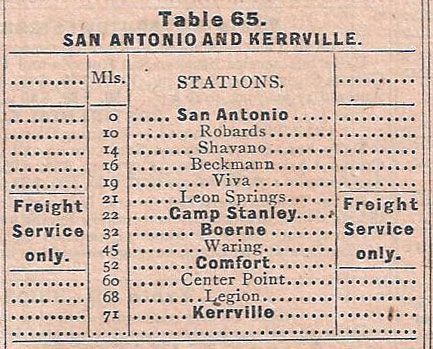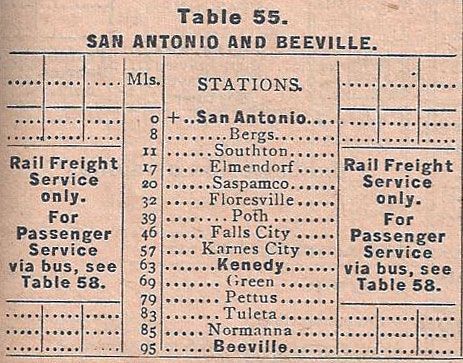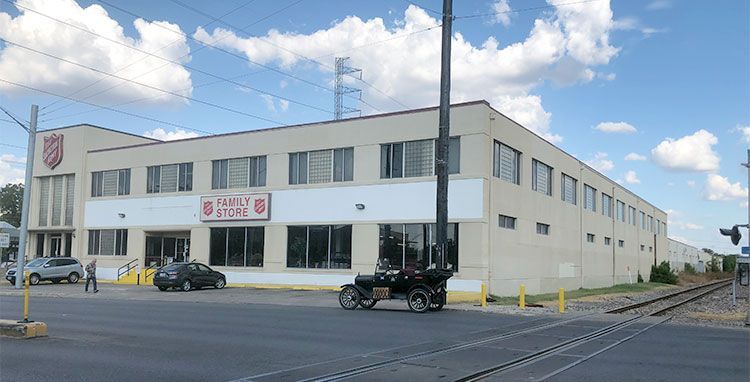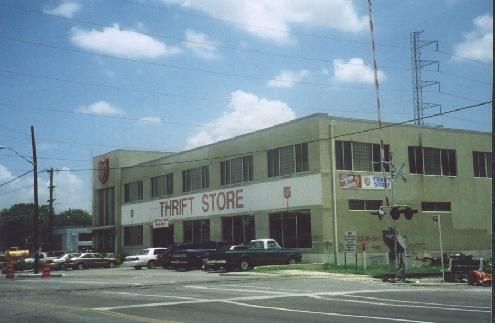San Antonio and Aransas Pass Railroad
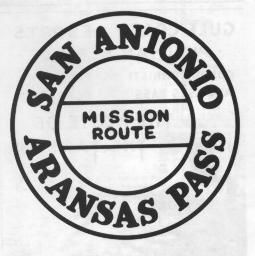
The San Antonio & Aransas Pass, known to most folks as "The SAAP," or "SAP," has a remarkable story. Begun as a local independent in 1884, it is the only of two railroads that was formed in San Antonio itself. It was created to connect San Antonio with a closer deep water port than Galveston. Service from there had begun just a few years earlier, in 1877. Many San Antonio city leaders, however, thought that competition was needed with this line built by the Galveston Harrisburg & San Antonio Railroad, which had already become, essentially, a subsidiary part of the Southern Pacific empire. They thought the S.P.'s monopoly on coastal rail service was both very expensive and failing to bring prosperity to the city. Another factor was that Corpus Christi Bay was simply closer to San Antonio. Furthermore, the route was all but undeveloped and there existed great potential for profitable enterprises and new towns along the way.
The first town reached by the SA & AP was Floresville. This was achieved in 1886. Floresville was created when news of the railroad's arrival was announced. The company owned three Baldwin locomotives, all second hand 2-6-0s, which they named the "Sam Maverick," the "Chas Hugo," and the "M. Kenedy," after significant supporters and company officers. The "SAP" also owned five passenger cars. The first port reached by the fledgling railroad was Corpus Christi, in 1887, not Aransas Pass, which was eventually reached in 1889. Building on this success the SA & AP then spread north from San Antonio into the Hill Country, reaching as far as Kerrville. At the same time it also created an alternative route to Houston. This did not sit well with the Southern Pacific RR at all. Eventually the "SAP" would extend as far north as Waco. In time the focal point of the railroad became Yoakum, where the railroad had its repair shops.
The railroad was chartered on 8/28/1884, and really only existed as a true independent until 1890. Uriah Lott was the driving force behind the railroad. He had built the Tex Mex railroad, first as a narrow gauge, then widened to standard gauge, and came to the "SAP" after the initial surveys had already been made but no actual construction begun. He was a man of considerable drive and vision, but was never a wealthy man. He was originally from New York and he must have been a phenomenal sales man. The SA & AP got started with just one mile of track, which Lott himself and some other company officials helped to build, engaging in the task of laying track in the Texas heat themselves to create interest and attract more money. Most of the first mile was made with rails and ties previously used by other railroads, and a retired old steam engine that had been on its way to the scrap heap.
The depot, opened in 1886, though not as grand as other San Antonio stations, was a very practical building for an efficient district railroad. Its only "frill" was the "steeple" on the frontage corner. It had two floors and provided a center overhanging eave create shade. The main entrance was on the south side facing the tracks. The ground floor contained the waiting, baggage and express rooms. There was a lunch counter in the northwest corner. Above were offices for the Superintendent, dispatchers, trainmaster and clerks. It also held the telegraph office. Teddy Roosevelt left from this depot with his Rough Riders on 5/30/1898, and the station was used in a 1925 movie about them. Only about 120 feet of the movie still exists, in the Library of Congress. Remarkably that is about the same minute fraction that remains of the depot. Some booths in the Little Rhein Steak House, 231 S. Alamo, have the benches from the depot as seats.
With the successful completion of the first mile, the railroad got four more miles of track from a San Antonio street car company. With this in place, it then managed to wrangle ten more miles of track from a Pennsylvania steel company. These achievements led to more interest and the railroad was off. The first round trip was made to and from Floresville, some 30 miles to the south. A new railroad in a new direction is quite a thing to observe and crowds thronged to see the "new" train in both towns. Having got this far, all the initial money was gone and the railroad might have died if Lott had not traveled back to Corpus Christi, where he had once briefly run a store, to see Mifflin Kenedy, who had helped to finance the Tex-Mex. With Kenedy as a backer, the destination switched from Aransas Pass to Corpus Christi. Neither yet had deep water port facilities. It had been thought that Aransas Pass was the more likely candidate but Corpus Christi ended up winning the distinction. Now that the railroad was on better financial terms it began to expand rapidly. Corpus Christi, then still a small town of around 2,000, was reached in November 1886. When Lott had gone there to obtain Kenedy's assistance, he had had to travel there first by train to Galveston, on the rival" Galveston, Harrisburg & San Antonio RR, and then by ship to Corpus Christi. The new direct link between San Antonio and Corpus Christi was obviously a quantum improvement.
The SA & AP is the railroad that killed the town of Helena, once the county seat of Karnes County, but now a tiny ghost town, a not so wide spot on a quiet back road. A colorful legend exists about how this happened and as it is not inconsistent with the known facts, it is quite fun to repeat it. Essentially, towns had to pay substantial amounts if the railroad was to provide it with service. Payment would need to be in the form of land for a depot and the right of way for the rails, plus good old fashioned cash, of course. Some form of inducement for the railroad was expected and necessary, to cover construction expenses. Towns knew there would be many benefits that would follow the railroad's arrival. For example, Corpus Christi, which only had a population of around 2,000 people, had to pay the "SAP" $102,950, this figure having been determined by the railroad. (If you see how the task of reaching Corpus was achieved, including the number of massive bridges, you'd have to say the got a huge bargain.) Helena was levied $60,000 and when it was not forthcoming the line was simply laid in the direction of towns that did pay, such as Karnes City, which supplanted Helena as the county seat within just a few years of the railroad's arrival. Helena was once a thriving town at the intersection of two major cattle drive routes. To cater to all its visitors it had many hotels and other businesses. Because of the influx of relatively well paid cowboys needing to let off a little steam and get relief from the rigors of their dusty labor, Helena had a fearsome reputation for lawlessness of all kinds, including gun fights and murder. The legend says that a nearby landowner's son was killed in one of the frequent gun fights that had made the city so notorious and the father swore to get his revenge by "killing the town that killed his son." This he did by offering right of and cash, a bonus in railroad terms, to the perennially financially troubled railroad. And now all that remains of Helena is the lonely old court house, later used as a school, the metal bars of the once very popular jail and the remains of an abandoned Masonic Lodge.
Regrettably, the Achilles heel of the SA & AP was it's track work. Rails were often laid directly onto the ground, with little or no ballast. This, coupled with the fact the railroad mainly used light weight rail, usually 50 pound, was a recipe for disaster. Heat would warp the rails, rot would set in to the ties, and any rain would undermine the line, as there was no proper drainage. Furthermore, most of the company's bridges and trestles were wooden, which did not make for very durable structures during river flooding. In those unregulated days, when the necessity to get the rail line laid quickly and cheaply was paramount, so revenue could begin to flow in order to pay for construction, there were many accidents. Add to this dangerous situation a high volume of traffic on single tracks, insufficient sidings for passing trains and primitive system signals and track access controls, and the results were obvious. Within a short time there were any number of derailments and collisions.
On 1/2/1890 there was a disastrous wreck, when a wooden bridge over the La Vaca river at Hallettsville collapsed as a freight train, pulled by #56, was attempting to cross it. The loss of life and the entire train and all its contents, which included alcohol, to the delight of the crowd that came to see the accident, led to many lawsuits. These included some for having built a wooden bridge over a river very well known to flood. The already financially strained company had to go into to receivership on 7/14/1890.
The S.A. & A.P. went into receivership in July, 1890. Here are some numbers from the financial report filed with the receiver:
| Earnings reported | |
|---|---|
| Passenger | 16,322.95 |
| 1,366.34 | |
| Express | 820.00 |
| Freight | 29,737.69 |
| Miscellaneous | 457.97 |
| Total | 48,704.95 |
| Expenses | |
|---|---|
| Maint. of way | 11,535.72 |
| Maint. of Equip | 6,828.27 |
| Conducting Transportation * | 24,099.13 |
| Miscellaneous | 7,571.91 |
| Total | 50,035.03 |
* Conducting Transportation includes fuel, water, train crew wages, repairs and injuries.
At this time the railroad had 688 miles of track and 50 locomotives The line was re-organized under new management but, noticeably, without Uriah Lott. The Southern Pacific bought the controlling interest in the company from Mifflin Kenedy but did not exercise direct control. Instead it installed people in key positions to run it. The S.P., for all intents and purposes, gained full control of the "SAP" and its lucrative services to Corpus Christi and into the Rio Grande valley, as a connecting line to the Tex-Mex railroad had been built. The SP was sued by the Texas Railroad Commission, as Texas law forbade the ownership and control of parallel and competing lines, which was certainly the case with the route to Houston, and it was forced to divest itself of its stock in the SA & AP. However, they sold it to "friendly" third parties and still exerted effective control until they were finally allowed to buy the company outright, which they did in 1925, when the SA & AP was leased to the Texas & New Orleans Railroad, the S.P.'s subsidiary in Texas.
The SP's control may not have been a bad thing, all things considered. By 1916 the SA & AP had 86 locomotives and was earning $1,228,000 a year from passenger service and $2,851,000 from freight. Many a small town was created by the railroad, either directly or indirectly, and once small towns such as Kerrville and Kenedy, named for the railroad's early financial "savior," grew nicely into much larger communities. The system's peak year for mileage was 1927 when it had 859 miles of lines.
San Antonio and Aransas Pass depots in other towns.
The SA & AP line to Corpus Christi was down graded to secondary status in 1925 almost immediately after the Southern Pacific was finally allowed to legally control and purchase the railroad. The line through nearby Pleasanton, originally built by the San Antonio Uvalde & Gulf Railroad became the primary line. The SAU & G, affectionately known as the "Sausage," had itself become part of the Missouri Pacific's system, as part of a grouping of former independent lines called the "Gulf Coast Lines." The SP found it to be more advantageous to lease use on the more direct MOPAC line than to upgrade the older, twistier, SA & AP line. It was also a tacit acknowledgement that Corpus Christi was a Missouri Pacific territory.
The line to Corpus Christi served an almost forgotten purpose during World War II. An "Alien Detention Center," or prisoner of war camp was built near the tracks at Kenedy. An article in the Geneva convention states that prisoners of war must be held at the same latitude at which they were captured. As the North African campaign progressed many such prisoners were taken and the USA was obligated to keep them at or near the same distance from the equator. Central Texas fitted the bill and the railroad delivered the prisoners and the supplies to keep the camps going.
SA & AP Advertisements
Much of the SA & AP is completely gone now. The tracks north through Boerne were removed after 1971, when the Southern Pacific ended rail service beyond the rock quarry just south of Camp Bullis. The line through Floresville was torn out as late as 1998. Local freight service had ended some five years earlier. Now just about the only section of the old "SAP" remaining is what is now called the "DALSA Sub" by the Union Pacific. DALSA is an abbreviation of Dallas / San Antonio. The DALSA "sub" section is a connection between two main lines, allowing trains to move from one to the other.
1955 Southern Pacific timetable details showing freight
service only to the Hill Country and to Beeville
The "SAP" depot in San Antonio had already ceased to function as such before WW I, during which time the ground floor was used as an officer's club, although some railroad offices were maintained on the upper floor. The building was sold in 1925, but not before the depot got to feature in a movie about Teddy Roosevelt and the Rough Riders. It stood for another fourteen years and was occupied by a variety of interests including a furniture company for over ten years. A wooden frame building, its life span of over 50 years of service came to an end a little after the SA & AP was fully merged into the T & NO in 1934 and completely lost its original identity.
Site of the San Antonio & Aransas Pass depot in San Antonio today
The SA & AP depot in San Antonio was torn down in 1939. Even the street was renamed from Aransas to South Alamo. Souvenir hunters were invited to help themselves. San Antonio's premier funeral director, Porter Loring, whose first job had been a ticket agent at the depot, bought the window frame he had once worked behind. The depot's benches ended up and are still at the Little Rhein Steak House on Alamo Street, on the Riverwalk.
San Antonio and Aransas Pass Timeline
━━━━━━━━━━━━━━━━━
1884
The San Antonio and Aransas Pass (S.A. & A.P.) is formed in San Antonio, with the intention of reaching a closer port than Galveston. The first route survey is begun.
━━━━━━━━━━━━━━━━━
1885
Uriah Lott is hired to build and run the San Antonio and Aransas Pass (S.A. & A.P.)
━━━━━━━━━━━━━━━━━
1886
The S.A. & A.P. scrapes together enough resources to reach Floresville, 30 miles away. Following an injection of funds from Corpus Christi businessmen, that port is reached instead of Aransas Pass, which had only been a speculative guess of the line's most likely destination
The S.A. & A.P. opens its own depot in San Antonio
━━━━━━━━━━━━━━━━━
1887
The S.A. & A.P. builds a branch line to the Hill Country in the hopes of eventually reaching San Angelo. However it does not get further than Kerrville, due to the lack of any towns of significant size to pay bonuses to pay for construction.
━━━━━━━━━━━━━━━━━
1888
A 21 mile line to Rockport via Aransas Pass is built.
A 43 mile line between Skidmore and Alice is built.
━━━━━━━━━━━━━━━━━
1889
A 176 mile line between Kenedy and Houston is completed
A branch line between Shiner and Lockhart is completed
━━━━━━━━━━━━━━━━━
1890
After a bridge wash out accident in Halletsville, the S.A. & A.P. is successfully sued in court, leading to bankruptcy. From almost nothing it had built 688 miles of track and acquired 50 locomotives. The Texas Railroad Commission turns a blind eye as the Southern Pacific (SP) buys a controlling interest from the lines main backer but due to Texas law, the SP is unable to take ownership.
━━━━━━━━━━━━━━━━━
1891
A 170 mile line bet wen Yoakum and Waco is completed despite the bankruptcy
━━━━━━━━━━━━━━━━━
1903
Benjamin Yoakum, formerly with the S.A. & A.P. and now with the St. Louis, Brownsville & Mexico complains about the SP's illegal control of the S.A. & A.P. after the SP announces its intention to extend its line southward from Alice. Despite being formally obliged to formally divest itself of the S.A. & A.P., in fact nothing really changes. An extension as far as Falfurrias is built
━━━━━━━━━━━━━━━━━
1916
The S.A. & A.P. has 86 locomotives and earns over $4 million
━━━━━━━━━━━━━━━━━
1925
After years of de fato control, the Southern pacific is allowed to take outright ownership of the S.A. & A.P. It immediately down grades the entire system to secondary status.
━━━━━━━━━━━━━━━━━
1927
The line from Falfurrias is extended to Edinburg and Brownsville
━━━━━━━━━━━━━━━━━
1932
Two sections of original S.A. & A.P. tracks abandoned, between Gonzales and Luling, and Shiner to Gonzalez
━━━━━━━━━━━━━━━━━
1947
All passenger service on the old S.A. & A.P. system is abandoned
━━━━━━━━━━━━━━━━━
1960
The SP loses access to its yard in Corpus Christi when the bascule bridge is removed. The old rail causeway from Portland is sold to the Texas Department of Transportation and taken over by a widened road causeway
━━━━━━━━━━━━━━━━━
1971
Tracks bet wen Camp Stanley and Kerrville are pulled up
━━━━━━━━━━━━━━━━━
1985
Branch line between Gregory and Rockport is removed
━━━━━━━━━━━━━━━━━
1987
Tracks between Kenedy and Beeville are removed
━━━━━━━━━━━━━━━━━
1998
Tracks south of the electricity power stations at Elmendorf through Floresville to kenedy are pulled up.
━━━━━━━━━━━━━━━━━
2002
Tracks north of a large quarry at Loop 1604 to Camp Stanley are pulled up
Transportation Museum
CONTACT US TODAY
Phone:
210-490-3554 (Only on Weekends)
Email:
info@txtm.org
Physical Address
11731 Wetmore Rd.
San Antonio TX 78247
Please Contact Us for Our Mailing Address
All Rights Reserved | Texas Transportation Museum
